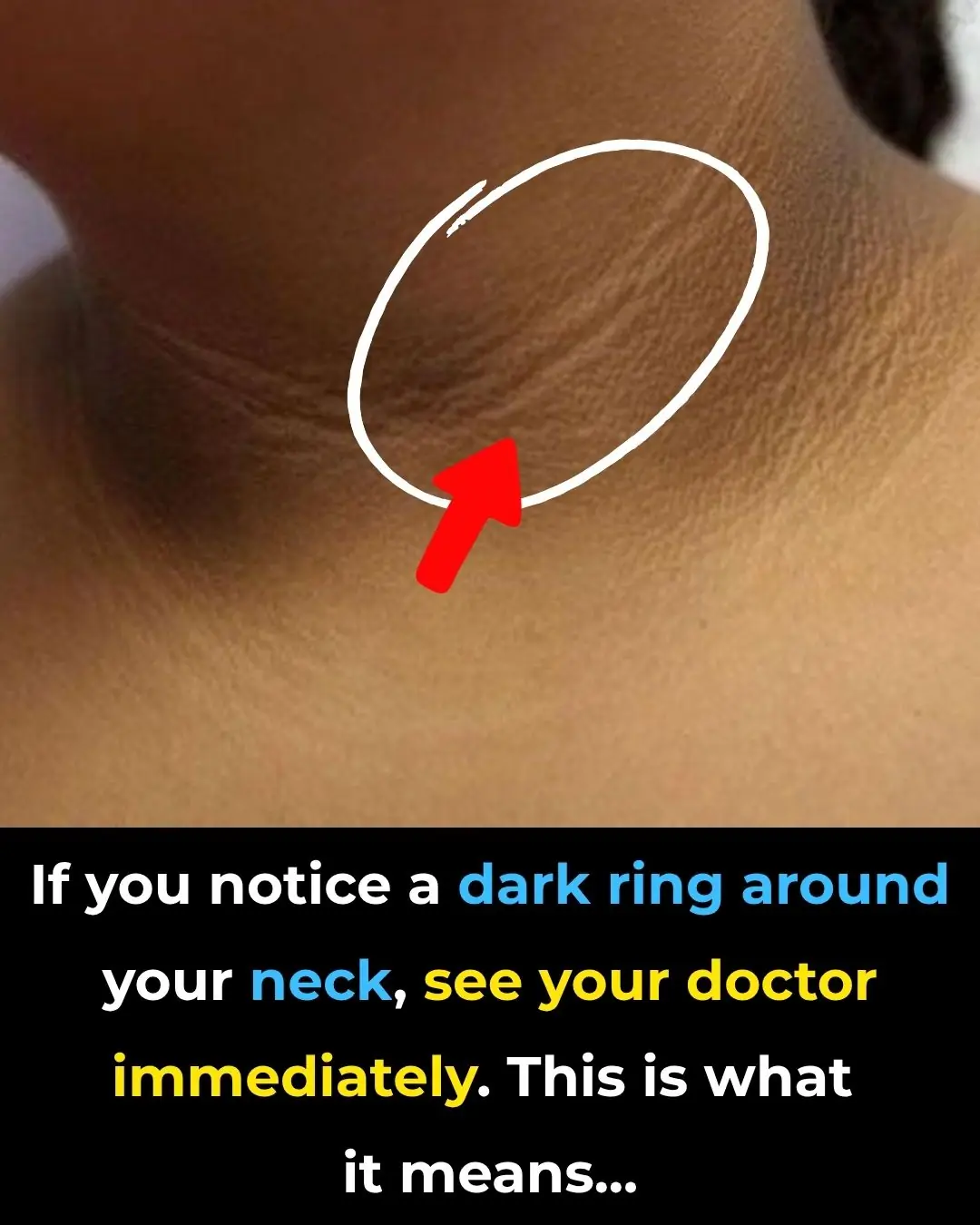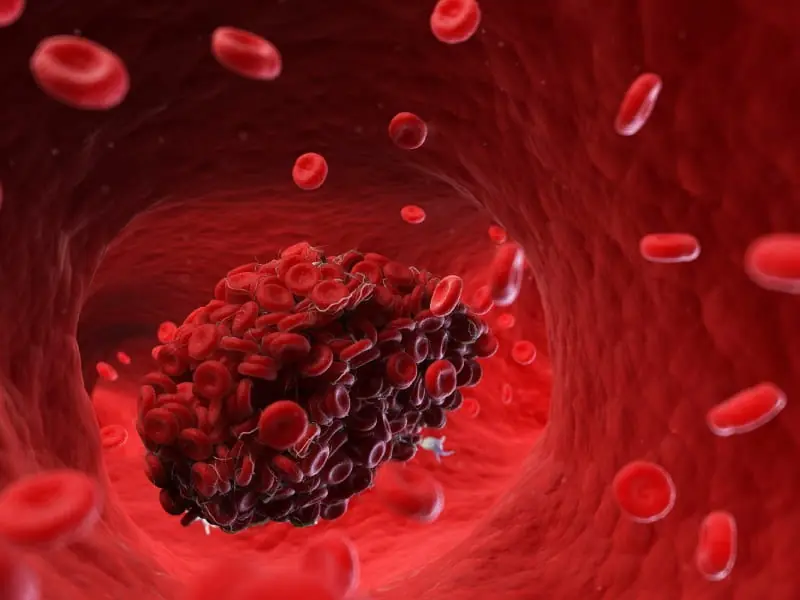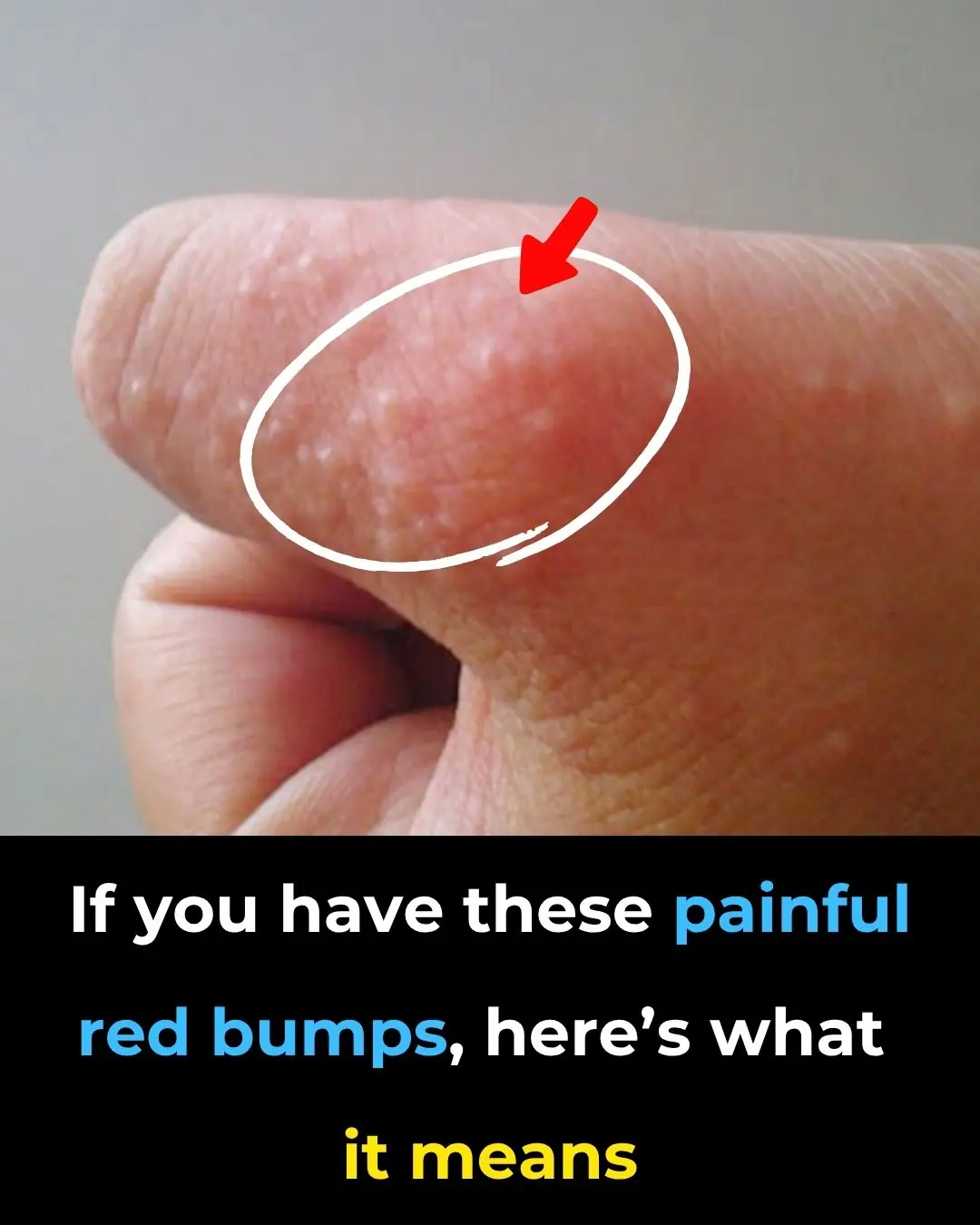
13 Warning Signs of High Blood Sugar and 9 Ways to Take Control of Your Health
13 Warning Signs of High Blood Sugar and 9 Ways to Take Control of Your Health
High blood sugar levels, a key indicator of Type 2 diabetes, often develop quietly with symptoms that are easy to miss. In fact, 1 in 3 people with diabetes don’t even know they have it. Ignoring these early signs can lead to dangerous complications like heart disease, nerve damage, and vision problems.
This article will help you identify the symptoms of high blood sugar levels – the early warning signs of Type 2 diabetes – so you can take steps to protect your health and prevent complications. With the right diet, exercise, and, if necessary, medications, diabetes can be managed, allowing you to live a fulfilling and healthy life.
In the first part of this article, we’ll explore the early warning signs of diabetes. In the second part, you’ll learn about effective ways to prevent Type 2 diabetes and take control of your health.

Warning Signs of Diabetes
In 2013, over 382 million people globally had diabetes, with 90% suffering from Type 2 diabetes. This metabolic disease is characterized by high levels of sugar (glucose) in the blood. Insulin production – a pancreatic hormone that usually balances blood sugar levels – is either reduced, or the body's cells don’t respond to it properly. The following symptoms often develop as a result:
-
Frequent Urination (Polyuria): If you notice you have to urinate more often, especially waking up multiple times during the night to empty your bladder, this could be a warning sign. The kidneys work harder to get rid of excess glucose from the blood.
-
Excessive Thirst (Polydipsia): This symptom is linked to increased urination. As you lose more fluids, your body tries to replenish them, leading to a constant need to drink.
-
Increased Hunger (Polyphagia): Due to extreme highs and lows in blood sugar levels, the body develops a sudden urge to eat. Your cells aren’t getting enough glucose, so you crave it.
-
Dry Mouth: You might experience a persistent lack of moisture in your mouth, which can be unpleasant and dangerous. Dry mouth can become a breeding ground for bacteria, leading to various oral and dental problems. Gum diseases are a known complication of diabetes.
-
Unexplained Weight Loss or Weight Gain: As insulin can't get glucose into the cells, the body reacts as if it's starving and starts breaking down proteins from muscles. Rapid, unexplained weight loss (10 to 20 pounds over a couple of months) is unhealthy and requires investigation. Conversely, increased consumption of sugary foods can lead to weight gain.
-
Fatigue: Excessive tiredness can develop when the body constantly compensates for the lack of glucose in the cells. Interruptions to sleep due to frequent urination also contribute. People often experience lower energy levels and feel chronically unwell. It's also common to feel irritable and in a bad mood.
-
Vision Problems: High blood sugar also affects the eyes by changing the shape of the lens. As a result, your vision becomes blurry, and you might see occasional flashes of light or experience distorted vision. Initially, these eye changes are reversible. However, if sugar levels remain high for an extended period, this can cause permanent damage and even lead to eyesight loss.
-
Headaches: A headache can develop due to elevated blood sugar levels and is considered an early sign of hyperglycemia (high blood glucose). This symptom typically worsens as the condition progresses.
-
Infections, Cuts, and Bruises That Do Not Heal: This classic sign of diabetes is a consequence of blood vessel damage. Excessive amounts of sugar harm veins and arteries, making them less able to transport blood efficiently to repair and heal damage.
-
Yeast Infections: Since bacteria and fungi thrive in a sugary environment, infections can become more common. The most frequent are yeast infections, such as Candida, especially vaginal Candida infections in women.
-
Numbness and Tingling in Hands and Feet: This symptom results from nerve damage – neuropathy – connected with diabetes. Tingling and numbness in arms and feet can be accompanied by burning pain and swelling. If sugar levels are not brought down, the nerve damage can become permanent, a serious complication of diabetes called diabetic neuropathy.
-
Skin Changes: Velvety dark skin, known as acanthosis nigricans, can appear on the neck, groin, and armpit. You might also observe other unusual skin changes and itchiness, especially around the vaginal or groin area.
-
Sexual Dysfunction: Diabetes also damages blood vessels and nerves in the sex organs, which can lead to various sexual problems. Women may experience vaginal dryness, and men can have difficulty with erections; 35% to 75% of men with diabetes suffer from impotence.
If you are experiencing some of these symptoms, see your doctor for a blood test to determine if you are indeed suffering from Type 2 diabetes. Several tests are used and typically need to be repeated for a reliable diagnosis. The fasting plasma glucose test checks your sugar levels after 8 hours of fasting. If your blood sugar is above 126 milligrams per deciliter (mg/dL) on two occasions, it indicates diabetes. Slightly lower values of 100 to 125 mg/dL are considered prediabetes, which is also a serious concern.

9 Effective Steps to Prevent Type 2 Diabetes
Before people develop Type 2 diabetes, they almost always have “pre-diabetes,” where blood glucose levels are higher than normal but not yet high enough for a diabetes diagnosis. A pre-diabetes diagnosis should be taken seriously as a wake-up call for change.
This doesn’t necessarily mean these individuals will get diabetes; they have the time and opportunity to correct their habits, and early treatment can actually return blood glucose levels to the normal range. Getting rid of unhealthy habits and developing healthier ones is your first step to improving your health. Being diagnosed as pre-diabetic is an opportunity to initiate lifestyle changes to help prevent diabetes.
Here are nine preliminary and essential steps that are a good way to start improving your health and reduce the risk of developing diabetes:
1. Be Physically Active
Being more physically active is one of the most important and effective changes you can make to reduce the risk or even prevent Type 2 diabetes. If it's been a long time since you last exercised, start gradually: take the stairs instead of the elevator, do stretching while watching TV, and so on.
Exercise is an integral part of the treatment plan for pre-diabetics because it lowers blood sugar levels and reduces body fat. An ideal training program should be held five times a week, 30 minutes each time. If you can’t set aside that much time at once, remember that shorter bursts of activity count too.
2. Lose Weight
Obesity is one of the main reasons for Type 2 diabetes. It's important to know that you don’t necessarily need to lose dozens of pounds to see a difference and prevent diabetes. According to the American Diabetes Association, reducing 7% of your body weight helps reduce the risk of diabetes by about 58%! The key is to lose weight to improve your body's health and blood sugar, without resorting to extreme diets that may harm your health.
3. Don’t Smoke
A research published in 2012 showed that smoking is associated with insulin resistance and inflammation. It increases the risk of developing Type 2 diabetes and aggravates its complications. The study suggests that avoiding smoking is one of the important ways for diabetes control and preventing diabetic complications.
4. Improve Sleep Habits
A study from 2007 found that short sleep duration could be a significant risk factor for diabetes. Subjects who slept 5 or fewer hours were almost twice as likely as those who slept 7 hours to have diabetes over the follow-up period.
A person who doesn’t get enough sleep regularly will find it difficult to lose weight, and it will make it difficult for their body to use insulin more efficiently. It is advisable to adopt good sleep habits: go to bed and wake at regular times daily, relax before turning off the lights, and avoid watching too much television or using smartphones before bedtime.
5. Get Support
Weight loss, a healthy diet, and regular physical activity are steps made easier with the support and encouragement of others. For example, you can join groups with similar goals (e.g., a weight loss group or a running group) to help you pursue a healthy lifestyle and avoid mental and physical breaking points.
6. Improve Your Diet
Eating an unhealthy diet rich in red meat, unhealthy fats, sugars, and processed food will increase your risk of developing diabetes. Instead, eat lots of vegetables, especially those containing less starch, such as spinach, broccoli, carrots, and green beans.
Add foods rich in dietary fiber to your daily menu and choose whole-grain foods instead of refined and processed grains, such as brown rice instead of white rice. Fruits are also recommended; although pre-diabetics and diabetics are sometimes concerned about their sugar content, the American Diabetes Association generally encourages fruit consumption when using the glycemic index to guide food choices.
7. Reduce Stress Levels
A research published in PLoS One in 2017 found that stress is a strong risk factor for Type 2 diabetes. The research concluded that improving mental health and reducing stress may reduce the growing incidence of Type 2 diabetes and lead to better glycemic control.
8. Visit Your Doctor Regularly
People diagnosed as pre-diabetic don’t always see the importance of frequent visits to their physician. However, frequent medical monitoring every three to six months is highly important. If your situation is good and improving, you will receive reassurance from the doctor, which has significant value. If your condition does not improve, your doctor will be able to help get you back on track or provide specific advice or medication if needed.
9. Commit Yourself
Commitment to changing your lifestyle is the most important key to the success of the process. You need to understand that you will not be perfect every day and that changes take time, but you must commit to doing your best most of the time. Crises and challenges are part of the change process; you need to account for these moments, allow yourself to experience them, and emerge better and stronger.
News in the same category


The Truth About “Old Person Smell”: What Causes It And How To Get Rid Of It

Scientifically Proven Health Benefits of Lemons (Including Lemon Water)

If you drink cucumber water every morning, this is what happens to your body

If You Notice a Dark Ring Around Your Neck, Go See Your Doctor Immediately! This Is What It Means

Health Food & Nutrition Beauty Aromatherapy Animals

Cardiologists Say This Common Habit Is a Blood Clot Risk

‘Ghost Boy’ Wakes Up From Coma After Being Trapped For 12 Years—What He Heard the Whole Time Will Haunt You

What Staying Up Late Every Night Really Does to You—Massive 24,000 Person Study Reveals the Truth

Horrifying reality of what really happens to your body if you swallow too much gum

Red Spots on Skin: 13 Common Causes

Painful Red Bumps on Skin? It Might Be Dyshidrotic Eczema

How to Remove Dental Plaque Naturally (Evidence Based)

7 signs of cancer in the morning when waking up without knowing

Facing Your Phobias While Lucid Dreaming May Reduce Real-Life Fears, Scientists Say

Scientists Reveal: Fat Is Expelled Through Your Breath During Weight Loss. You Literally Breathe Out Fat

Scientists Have Found The ‘Off’ Switch For Anxiety Without Any Side Effects

How to Lower High Blood Pressure Quickly Without Medications (Evidence Based)

10 Surprising Benefits of Drinking Apple Cider Vinegar According to Science
News Post

This Military Sleep Method Helps You Fall Asleep In Less Than Two Minutes

If You Have These Tiny Red Dots On Your Arm, Do Not Ignore The Warning Signs

The Truth About “Old Person Smell”: What Causes It And How To Get Rid Of It

Scientifically Proven Health Benefits of Lemons (Including Lemon Water)

Instructor Told Pilot To Turn Seconds Before Black Hawk Collided With Passenger Jet

Here’s What You Need To Know To Stay Safe Of The The Hidden Fire Risk Of Air Fryers

Wildfire Grows Into Megafire In Northern Arizona—Now Driving Its Own Climate

Mystery Space Object Might Be An Alien Ship Preparing To Strike Earth

Research Reveals Cells’ Ability of Deceased Organisms to Form New Life

Ethan Caldwell appeared to have everything—wealth, fame, and power. By the age of 42, he was a billionaire, having sold a booming tech startup at its market peak

The husband forgot to end the call. The wife overheard his conversation with his mother and filed for divorce the very same day.

If you drink cucumber water every morning, this is what happens to your body

Husband Leaves Pregnant Wife for Mistress — Eight Years Later, She Returns in a Helicopter with Their Twins…

If You Notice a Dark Ring Around Your Neck, Go See Your Doctor Immediately! This Is What It Means

— They came empty-handed — so drink water, — the relatives finally drove the hostess crazy.

Health Food & Nutrition Beauty Aromatherapy Animals

A Waitress Shamed My Grandma for Leaving 'Too Small' a Tip – I Made Her Regret It in the Most Unexpected Way

My MIL Secretly Made a Duplicate Key to Our House — What She Did There While We Were Away Stunned Me
